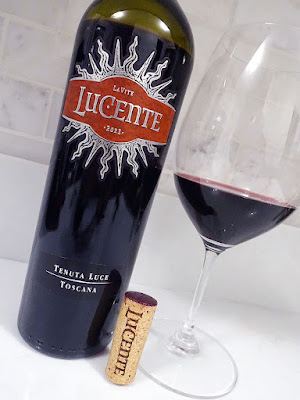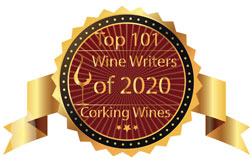red wine review is an excellent and historic 64th vintage of a Cabernet Sauvignon from Coonawarra in South Australia that returned to the LCBO earlier this month as part of the LCBO VINTAGES New Release Collection.
It is produced by Wynns Coonawarra Estate, a historic and renowned winery in Coonawarra, South Australia, that was established in 1891 by visionary Scottish pioneer John Riddoch. After moving to the Coonawarra region in 1861, he divided 800 hectares of terra rossa soil on his land and called it the Coonawarra Fruit Colony. He then offered four-hectare allotments to those interested and began planting his first vineyards in 1891, with 95,000 vines and 10,000 fruit trees planted in the first year. That same year, the famous triple-gabled winery and surrounding vineyards were built and named Chateau Comaum. By 1897, 141 hectares of vines were being cultivated, including 52 hectares by Riddoch. However, after a promising start, the Coonawarra Fruit Colony failed to prosper due to is distance from major markets and poor economic conditions, and John Riddoch died on July 15, 1901, at the age of 73.
In the first half of the 20th century, Coonawarra was at its lowest ebb as a wine-producing area. Although "Coonawarra Claret" was well-recognized in Australia, the red wine market was small as most Australians consumed fortified wines. The winery was destined to become a wool shed and sheep run until it was purchased in 1951 by Melbourne-based winemakers Samuel Wynn and his son David. With no expectations of making a profit, David took over the operations in 1953 and was Australia's first wine producer to use the word "estate" to mark the wine's regionality. It was during this time that David commissioned Melbourne artist Richard Beck to produce a woodcut of the winery facade - an illustration that has appeared on (almost) every Wynns Coonawarra Estate label since, and is one of Australia's most recognized wine symbols.
Beginning in the 1960s, as Australians began to develop a taste for dry red table wine, Wynns consistently marketed Coonawarra Estate wines based on their variety and place of origin, building awareness of the Coonawarra district as a region of outstanding wines. Wynns' success led to expansion, and by 1981 it was the largest grower in the district with 440 hectares under vine. In 1982, Wynns produced their first wine bearing John Riddoch's name.
The 1990s brought a new chapter in the history of Wynns when, in 1993, Winemaker Sue Hodder worked her first vintage at the estate alongside then Senior Winemaker Peter Douglas. In 1998, Sue was appointed Senior Winemaker - a position she holds to this day, while Sarah Pidgeon was welcomed to the team. Since the turn of the century, as Senior Winemaker, the renowned Sue Hodder oversaw the release of all the Wynns' first single vineyard wines, as well as the major rejuvenation projects across 300 hectares of vines. In 2004, Wynns Coonawarra Estate celebrated its 50th vintage of the iconic Wynns Coonawarra Estate Black Label Cabernet Sauvignon and marked the occasion by hosting many of the world's most influential wine tasters in Coonawarra for a special tasting of 50 vintages of this iconic wine.
In 2008, another round of replanting took place with new rootstocks, international vine clones, and selections from older top-quality Wynns vineyards. By 2015, Wynns vineyards were consolidated around the Gables winery, in the prime Terra Rossa vineyard sites of the region, with ongoing research and studies to ensure the best winemaking and viticultural practices are engaged for the future.
In 2016, Sue and Sarah were jointly named "Winemaker of the Year" at the Australian Society of Viticulture and Oenology (ASVO) Awards for excellence, while in 2017 Sue was awarded "Women of Inspiration" at the Women in Wine awards. In 2022, Sue Hodder celebrated her 30th vintage at Wynns and continues to bring valuable experience and passion to her work locally and internationally.
Coonawarra is named after an Aboriginal word meaning "honeysuckle". The region is situated in South Australia, 450 km west of Melbourne (Victoria) and 380 km southeast of Adelaide (South Australia). The region's claim to fame is its natural soil phenomenon called the terra rossa - a low, cigar-shaped ridge of soil stretching 20 kilometres long and up to two kilometres wide. Terra rossa, or red earth, is a topsoil that is rich and free-draining, but also thin. It ranges from 5 to 100 cm deep and is one of the best soils in Australia for winegrowing, producing small, well-coloured berries that develop well in optimal sunlight. The climate in Coonawarra is cool and marginal as it receives the cool Antarctic winds via the Southern Ocean, and helps ensure a long, cool ripening period which builds intensity of flavours slowly in the grape, as well as balanced acidity.
First produced in 1954, the Wynns Black Label Cabernet is truly an icon of Australian wine. Since its first vintage, it has had a reputation for ageing gracefully and displaying excellent varietal and regional characteristics. It is produced from only the top 20 to 25 percent quality of Cabernet Sauvignon fruit that is grown on Wynns' terra rossa vineyards. It was matured for 14 months in 31% new and seasoned French oak, in a combination of 61% hogsheads, 26% barriques, and 13% vats.
The 2019 growing season in Coonawarra was fed by good winter rains, and highlighted the importance of the good quality and quantity of underground water that was used to mitigate temperature and seasonal weather conditions. There was no significant crop loss due to the heat, while canopies remained in excellent condition right through to the end of harvest. The grapes also benefited significantly from the typically cool nights created by the Southern Ocean. A cool and dry April was perfect for ripening, allowing for full flavour development and optimal sugar levels, while yields were between average and just below the long-term average. Cabernet Sauvignon grapes were deep and rich in colour with great varietal definition and soft ripe tannins. Overall, the 2019 vintage in Coonawarra is considered to be excellent.
As a wine of style, stature, and a perennial favourite, the Black Label is one of Australia's benchmark Cabernet Sauvignon wines and can consistently be aged over the medium to long-term. Let's see how this 2019 Coonawarra Cabernet Sauvignon is tasting tonight...
Screw cap. The medium-high intensity nose is fragrant and open with attractive aromas of leafy grilled herbs, red & black fruits, currant, cherry, cassis, and fine wood spice with touches of mint and savoury earth. It's full-bodied, ripe, and dry with lovely red and black fruited cherry, currant, cassis, mint, and leafy herb flavours on the palate. It's well-structured with fresh, juicy acidity and ripe, structured, and fine-grained tannins that are youthful and a touch grippy. More savoury with earth and wood spice notes on the mid-palate, which linger through to the long, gently smoky finish. Enjoyable now, but still a few years away from prime drinking and should age gracefully into the 2040s. Highly recommended buy! Score: 93 pts
One other fine wine by Wynns Coonawarra Estate can be found at the LCBO, while the entire range can be ordered through their Agent - Mark Anthony Wine & Spirits.
It is produced by Wynns Coonawarra Estate, a historic and renowned winery in Coonawarra, South Australia, that was established in 1891 by visionary Scottish pioneer John Riddoch. After moving to the Coonawarra region in 1861, he divided 800 hectares of terra rossa soil on his land and called it the Coonawarra Fruit Colony. He then offered four-hectare allotments to those interested and began planting his first vineyards in 1891, with 95,000 vines and 10,000 fruit trees planted in the first year. That same year, the famous triple-gabled winery and surrounding vineyards were built and named Chateau Comaum. By 1897, 141 hectares of vines were being cultivated, including 52 hectares by Riddoch. However, after a promising start, the Coonawarra Fruit Colony failed to prosper due to is distance from major markets and poor economic conditions, and John Riddoch died on July 15, 1901, at the age of 73.
In the first half of the 20th century, Coonawarra was at its lowest ebb as a wine-producing area. Although "Coonawarra Claret" was well-recognized in Australia, the red wine market was small as most Australians consumed fortified wines. The winery was destined to become a wool shed and sheep run until it was purchased in 1951 by Melbourne-based winemakers Samuel Wynn and his son David. With no expectations of making a profit, David took over the operations in 1953 and was Australia's first wine producer to use the word "estate" to mark the wine's regionality. It was during this time that David commissioned Melbourne artist Richard Beck to produce a woodcut of the winery facade - an illustration that has appeared on (almost) every Wynns Coonawarra Estate label since, and is one of Australia's most recognized wine symbols.
Beginning in the 1960s, as Australians began to develop a taste for dry red table wine, Wynns consistently marketed Coonawarra Estate wines based on their variety and place of origin, building awareness of the Coonawarra district as a region of outstanding wines. Wynns' success led to expansion, and by 1981 it was the largest grower in the district with 440 hectares under vine. In 1982, Wynns produced their first wine bearing John Riddoch's name.
The 1990s brought a new chapter in the history of Wynns when, in 1993, Winemaker Sue Hodder worked her first vintage at the estate alongside then Senior Winemaker Peter Douglas. In 1998, Sue was appointed Senior Winemaker - a position she holds to this day, while Sarah Pidgeon was welcomed to the team. Since the turn of the century, as Senior Winemaker, the renowned Sue Hodder oversaw the release of all the Wynns' first single vineyard wines, as well as the major rejuvenation projects across 300 hectares of vines. In 2004, Wynns Coonawarra Estate celebrated its 50th vintage of the iconic Wynns Coonawarra Estate Black Label Cabernet Sauvignon and marked the occasion by hosting many of the world's most influential wine tasters in Coonawarra for a special tasting of 50 vintages of this iconic wine.
In 2008, another round of replanting took place with new rootstocks, international vine clones, and selections from older top-quality Wynns vineyards. By 2015, Wynns vineyards were consolidated around the Gables winery, in the prime Terra Rossa vineyard sites of the region, with ongoing research and studies to ensure the best winemaking and viticultural practices are engaged for the future.
In 2016, Sue and Sarah were jointly named "Winemaker of the Year" at the Australian Society of Viticulture and Oenology (ASVO) Awards for excellence, while in 2017 Sue was awarded "Women of Inspiration" at the Women in Wine awards. In 2022, Sue Hodder celebrated her 30th vintage at Wynns and continues to bring valuable experience and passion to her work locally and internationally.
Coonawarra is named after an Aboriginal word meaning "honeysuckle". The region is situated in South Australia, 450 km west of Melbourne (Victoria) and 380 km southeast of Adelaide (South Australia). The region's claim to fame is its natural soil phenomenon called the terra rossa - a low, cigar-shaped ridge of soil stretching 20 kilometres long and up to two kilometres wide. Terra rossa, or red earth, is a topsoil that is rich and free-draining, but also thin. It ranges from 5 to 100 cm deep and is one of the best soils in Australia for winegrowing, producing small, well-coloured berries that develop well in optimal sunlight. The climate in Coonawarra is cool and marginal as it receives the cool Antarctic winds via the Southern Ocean, and helps ensure a long, cool ripening period which builds intensity of flavours slowly in the grape, as well as balanced acidity.
First produced in 1954, the Wynns Black Label Cabernet is truly an icon of Australian wine. Since its first vintage, it has had a reputation for ageing gracefully and displaying excellent varietal and regional characteristics. It is produced from only the top 20 to 25 percent quality of Cabernet Sauvignon fruit that is grown on Wynns' terra rossa vineyards. It was matured for 14 months in 31% new and seasoned French oak, in a combination of 61% hogsheads, 26% barriques, and 13% vats.
The 2019 growing season in Coonawarra was fed by good winter rains, and highlighted the importance of the good quality and quantity of underground water that was used to mitigate temperature and seasonal weather conditions. There was no significant crop loss due to the heat, while canopies remained in excellent condition right through to the end of harvest. The grapes also benefited significantly from the typically cool nights created by the Southern Ocean. A cool and dry April was perfect for ripening, allowing for full flavour development and optimal sugar levels, while yields were between average and just below the long-term average. Cabernet Sauvignon grapes were deep and rich in colour with great varietal definition and soft ripe tannins. Overall, the 2019 vintage in Coonawarra is considered to be excellent.
As a wine of style, stature, and a perennial favourite, the Black Label is one of Australia's benchmark Cabernet Sauvignon wines and can consistently be aged over the medium to long-term. Let's see how this 2019 Coonawarra Cabernet Sauvignon is tasting tonight...
Tasting Note:
WYNNS COONAWARRA ESTATE BLACK LABEL CABERNET SAUVIGNON 2019 - Coonawarra, South Australia (#84996) (XD) - $47.95Screw cap. The medium-high intensity nose is fragrant and open with attractive aromas of leafy grilled herbs, red & black fruits, currant, cherry, cassis, and fine wood spice with touches of mint and savoury earth. It's full-bodied, ripe, and dry with lovely red and black fruited cherry, currant, cassis, mint, and leafy herb flavours on the palate. It's well-structured with fresh, juicy acidity and ripe, structured, and fine-grained tannins that are youthful and a touch grippy. More savoury with earth and wood spice notes on the mid-palate, which linger through to the long, gently smoky finish. Enjoyable now, but still a few years away from prime drinking and should age gracefully into the 2040s. Highly recommended buy! Score: 93 pts
One other fine wine by Wynns Coonawarra Estate can be found at the LCBO, while the entire range can be ordered through their Agent - Mark Anthony Wine & Spirits.
























